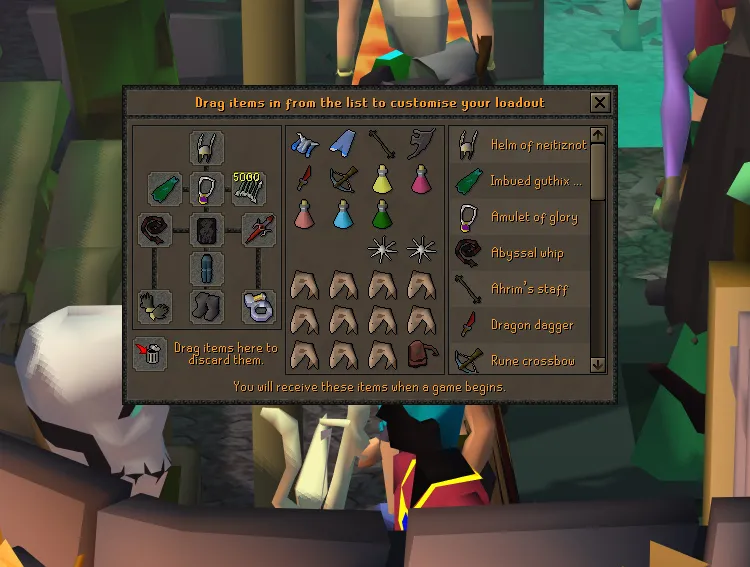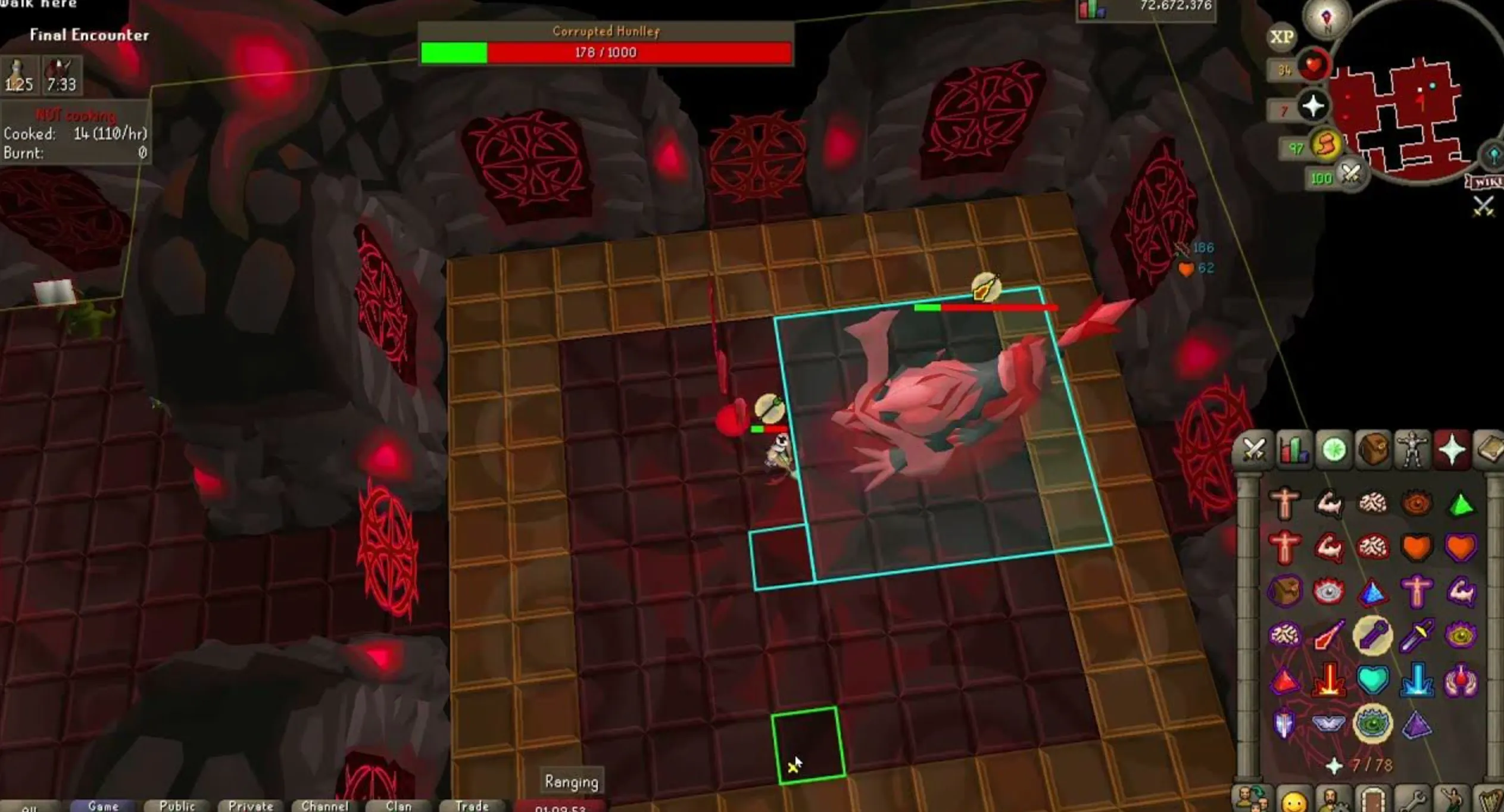Your cart is empty
How to Stack Items in OSRS A Complete Guide for Efficient Inventory Management

Inventory management is a cornerstone of success in Old School RuneScape (OSRS). With only 28 inventory slots, knowing how to stack items effectively can save time, streamline activities like skilling or bossing, and maximize profits at the Grand Exchange. This guide dives into the mechanics of stackable items, how to leverage them, and strategies to optimize your inventory. Whether you’re a new player or a seasoned veteran, you’ll find actionable tips to make the most of your OSRS experience.
Stackable items are those that occupy just one inventory slot, regardless of quantity, up to a maximum of 2,147,483,647 (due to the game’s 32-bit integer limit). Unlike non-stackable items like logs or ores, these items display a number on their icon to show how many you have. They weigh nothing and cannot be withdrawn as bank notes, making them ideal for efficient inventory management.
Common Examples of Stackable Items
- Coins: The universal currency, perfect for trading.
- Runes: Essential for casting spells.
- Arrows: Used for ranged combat.
- Seeds: For farming and herblore.
- Feathers: Useful for fishing and fletching.
- Swamp Tar: Always stackable, great for herblore.
Why Stackable Items Matter
Stackable items free up inventory space, allowing you to carry more resources or loot during activities like Slayer, PvM, or skilling. For example, instead of filling your inventory with individual fish, you can carry thousands of feathers for fly fishing in one slot. This efficiency is crucial for prolonged trips or when banking isn’t an option.
How to Identify and Collect Stackable Items
Not all items in OSRS are stackable, so recognizing which ones are can shape your gameplay strategy. Most stackable items are tradeable and tied to specific skills or activities, but some have unique stacking limits, like dark essence fragments (108) or coin pouches (140).
Farming Stackable Items
Here are some effective ways to gather stackable items:
- Thieving: Pickpocketing NPCs like Master Farmers yields seeds, a highly stackable resource.
- Slayer: Many Slayer monsters drop runes, coins, or other stackables as loot.
- Skilling: Activities like fishing (feathers) or fletching (arrow shafts) produce stackables.
- PvM: Bosses like Zulrah or Vorkath often drop large quantities of stackable loot, such as runes or arrows.
Special Cases and Exceptions
Some containers, like rune pouches (16,000 runes) or bolt pouches (10,000 bolts), impose lower stacking limits. Understanding these exceptions helps you plan your inventory for specific tasks, like extended bossing trips.
Using Bank Notes to Stack Non-Stackable Items
Non-stackable items, like logs or fish, normally take up one slot each, quickly filling your inventory. However, OSRS offers a workaround: bank notes. These are stackable representations of non-stackable items, allowing you to carry or trade large quantities efficiently.
How to Convert Items to Bank Notes
To turn items into notes, follow these steps:
- Open your bank interface.
- Locate the item you want to note (e.g., raw lobsters).
- Click the “Withdraw as: Note” button at the bottom of the bank interface.
- Withdraw the desired quantity. The items will appear as a single stack with a number indicating the amount.
To convert notes back to items, deposit them in your bank and withdraw them as items, or use them on a banker to un-note them instantly.
Where to Use Bank Notes
Bank notes are especially useful for:
- Grand Exchange Trading: Sell large quantities of items without clogging your inventory.
- Skilling Runs: Carry noted items to NPCs like Stiles (for fish) or the Tool Leprechaun (for crops) for quick noting.
- Looting: Free up space during PvM by noting drops with items like the Herb Sack or Seed Box.
NPC Services for Noting Items
| NPC | Location | Items Noted |
|---|---|---|
| Stiles | Musa Point | Raw/cooked lobster, tuna, swordfish |
| Tool Leprechaun | Farming patches | Most crops (except cabbages at South Falador) |
| Perdu | Various locations | Noting for specific tradeable items |
Maximizing Inventory Efficiency with Stackables
Once you understand stackable items and bank notes, you can optimize your inventory for various activities. Here are strategies to make every slot count.
Prioritize High-Value Stackables
Focus on collecting stackables with high utility or market value, like:
- Purple Sweets: Stackable, tradeable, and used for healing in niche scenarios.
- Teleport Scrolls: For quick travel without using inventory space.
- High-Level Runes: Blood or soul runes are valuable for both combat and profit.
Use Specialized Containers
Items like the Herb Sack, Seed Box, or Rune Pouch let you store stackables separately, effectively expanding your inventory. For example:
- Herb Sack: Holds up to 30 of each grimy herb, saving slots during Slayer.
- Rune Pouch: Stores three types of runes, perfect for mages.
- Seed Box: Carries six seed types, ideal for farming runs.
Combine Noting with Looting Tools
Tools like the Looting Bag (Wilderness only) or Gem Bag can complement stackables. For instance, use a Looting Bag to store noted items while keeping stackable runes or coins in your main inventory for combat.
Troubleshooting Common Stacking Issues
Even with a solid understanding, players often encounter stacking-related problems. Here’s how to address them.
Why Aren’t My Items Stacking?
If items aren’t stacking, check:
- Item Type: Only identical items stack. For example, used potions or degraded gear won’t stack with unused versions.
- Bank Settings: Ensure you’re withdrawing as items, not notes, if you need to use them.
- Container Limits: Some items, like coin pouches, have unique stack caps.
Dealing with Full Inventories
When your inventory fills up, try these solutions:
- Note Items: Use an NPC or bank to convert items to notes.
- Drop Low-Value Items: If banking isn’t an option, drop less valuable items to make space.
- Upgrade Gear: Items like the Graceful outfit or Beasts of Burden (Summoning familiars) can increase carrying capacity.
Avoiding Stack Overflow
While rare, hitting the 2.1 billion stack limit (e.g., with coins) can prevent you from picking up more. To manage this:
- Store excess in your bank as separate stacks.
- Convert coins to platinum tokens (1 token = 1,000 coins) for easier storage.
- Trade large stacks for high-value items to free up space.
Mastering how to stack items in OSRS transforms your gameplay, making skilling, combat, and trading smoother and more profitable. By prioritizing stackable items, using bank notes strategically, and leveraging tools like pouches or sacks, you’ll turn your inventory into a powerhouse of efficiency. Start implementing these tips today, and watch your OSRS adventures become less cluttered and more rewarding!

